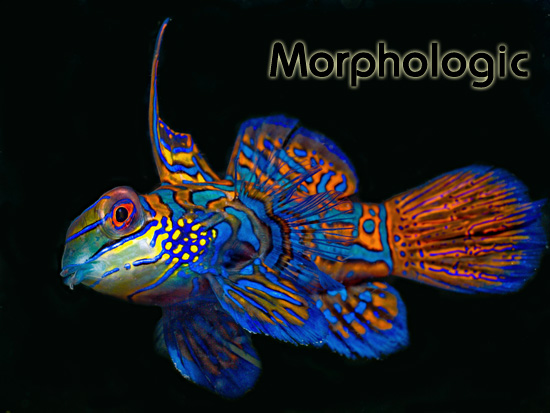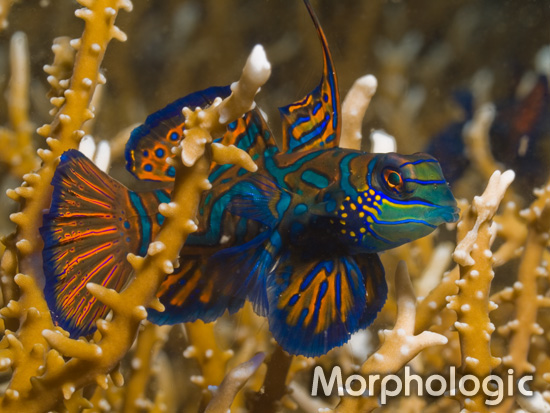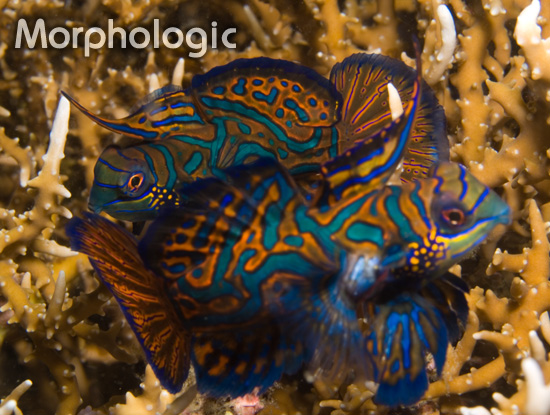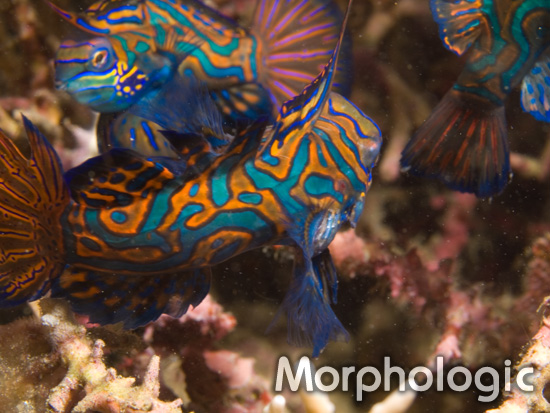Mandarinfish…Part 1…A Natural History Primer…

Blue mandarinfish are a beautiful and electrically-colored dragonet (Neither a goby or blenny as they are sometimes mis-categorized) found throughout the tropical Western Pacific. They are exceedingly popular as aquarium fish due to their peaceful nature, small size, and psychedelic garb. However, many of the mandarinfish imported into the aquarium trade don’t live long, and ultimately starve to death. Most wild-caught mandarinfish require live foods which they hunt for amongst the live rock of healthy, well-established reef aquariums. However, another factor that seems to affect a mandarinfish’s health and appetite is whether or not the fish was collected with sodium cyanide. As you are probably aware, sodium cyanide is still popularly utilized by ornamental fishermen in the Philippines, Indonesia, and other developing countries; where fishermen often subsist on less than $3 per day. Cyanide can make catching fish much easier, as it stuns the fish in their hard-to-reach hide-outs, causing them to swim out into the open water in an easily-catchable stupor. Unfortunately, the cyanide can kill the surrounding coral and deleteriously affect the health of the targeted fish.
Mandarinfish are an example of a fish species that is very difficult to observe on the reef, even if they are relatively abundant. They spend most of their day swimming cautiously through the dense networks of coral branches and thickets, foraging for food. However, at both dawn and dusk, these normally shy creatures become exceedingly bold as their hormones urge them to spawn.

Courtship begins just before sunrise/sunset, and involves the males patrolling their small territories and showing off their gaudy finnage. Males will often challenge each other for dominance, with the loser being chased away.

Here 3 males get caught up in the melee…
If a female is impressed with the male’s courtship display, she will swim towards him, and together they rise out of the safety of the coral branches into the water column about 2-3 feet. She releases her eggs, and he subsequently fertilizes them, and they drift off into the current to be dispersed throughout the reef. The pair then parts ways amicably. I do believe that the male can spawn multiple times with different mates each session.

To observe a massive mandarinfish spawning in nature is truly a spectacular site to behold. It only lasts about 45 minutes, and ends just as quickly as it starts. There can be dozens of mandarinfish over a few square meters of reef. Patrolling, chasing, courting. Typical mandarinfish habitat is quiet, shallow-water coral thickets (Acropora spp., finger Porites spp. etc.). I had the good fortune to witness such an even in Lembeh Strait, Indonesia. Here the coral thicket of choice was Anacropra sp.
In Part 2, we will look at how Filipino and Indonesian fishermen are learning how to catch mandarinfish without having to resort to using socium cyanide…

